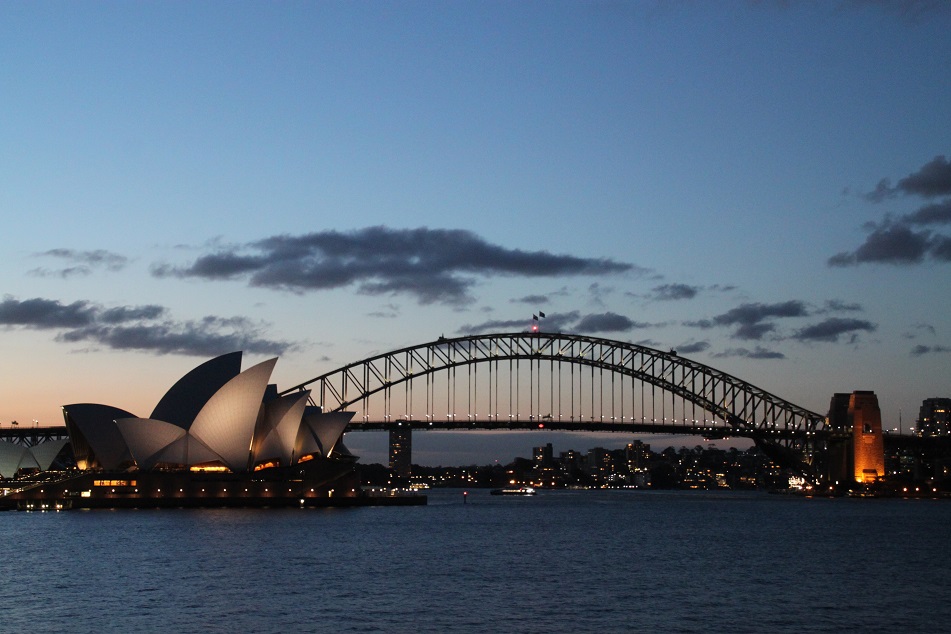One of the perks of living in Asia is having all those beautiful, magnificent and intriguing cultures right at my doorstep. From the gilded stupa of Shwedagon in Myanmar and the gold-leafed dome of Brunei’s Sultan Omar Ali Saifuddin Mosque to Kinkakuji, the golden pavilion in Kyoto, Japan, Asia is home to a multitude of shining monuments built in different styles. From India to Cambodia, Thailand, Vietnam and back home in Indonesia, there is no shortage of astonishing ancient temples in the continent, each one richly embellished with intricate carvings and statues. Since my first trip to Europe in 2007, I have never been to any other Western countries as Asia keeps calling me to explore its colorful corners – with the sole exception being Istanbul, the city that straddles both continents.
It took me a good ten years to visit a Western country again. This time, however, I headed southeast, not west. Located in the southeastern perimeter of Asia, Indonesia is bordered with Papua New Guinea to the extreme east – home of the Melanesian people, one of the main cultural groups that make up the Pacific nations – and Australia to its southeast. With a lot of curiosities in my head – ‘how has Australia’s geographical position influenced its culture?’, ‘what has the country done in relation to its aboriginal population?’, ‘what can other countries learn from Australia?’ – and its relative proximity to Jakarta, I finally went ‘Down Under’ this year. Being both a country and a continent, Australia is one big place to explore. However, as an introductory trip, two of the country’s largest cities that are also its main gateways to the rest of the world became the first places I explored in Australia.
Consistently ranked among the most livable metropolises on the planet – on the lists compiled by The Economist, Monocle and Mercer – Sydney and Melbourne are where roughly 40% of all Australians live. The oldest of all Aussie cities, Sydney is stunning with its scenic harbor, expansive parks, impressive skyline and excellent weather. On the other hand, though it is colder and the weather is far less predictable, Melbourne is quirky and fascinating in its own way with its daring architecture, lively multiculturalism, and artistic bent. Museums in both cities provide a good start to understand not only how Australia was ‘discovered’ and established as a modern state, but also why it is important to address issues in the past to ensure better living in the cities and the nation in the future.
For long Australia was a place where being a non-white resident meant limited opportunities and institutionalized discrimination. Through the museums young generations today can learn why discriminatory policies were overturned in the 1970s, Aboriginal rights are finally being addressed, and why embracing multiculturalism will bring more benefits to Australia. Coming to terms with its dark past is key to a nation’s progress, and Australia is certainly moving in the right direction by telling history as it is. This is something many Asian countries are still struggling to deal with as nationalism and a culture of ‘saving face’ are generally still more valued than logical truths. Sydney and Melbourne show that development is much more than building high-rise buildings, glass skyscrapers and fancy monuments. It’s about treating the people well by providing not only basic needs, but also things humans need to thrive – which leads to the perennial question, which one is more livable, Sydney or Melbourne?
The Sydney vs Melbourne – or Melbourne vs Sydney as Melburnians like to put it – rivalry is legendary, and it is conspicuous not only in the media, but also in some museums in both cities. To decide which one is better requires thorough study with broad parameters which I certainly won’t use. But through the upcoming posts on this blog I will eventually get to that question, Sydney or Melbourne?

Crossing Sydney Harbor where Beauty is in Abundance

Two of Sydney’s Most Iconic Landmarks: the Opera House and the Harbour Bridge

Burrata Cheese Meets Asian Ingredients, Sydney